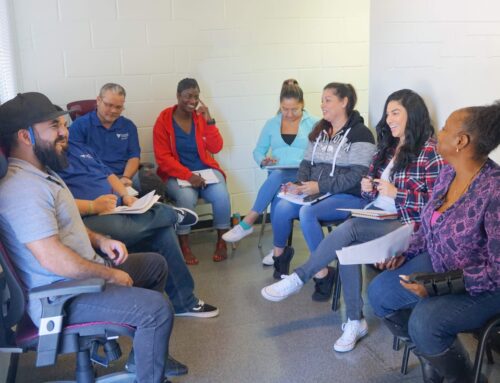 The circumstances of being transient in San Diego mean that collecting data during the coronavirus is difficult. Surprising or not, based on the data that has been collected, the rate of coronavirus among San Diego homeless, as of June 29, 2020, has been disproportionately low compared to the county average. The data and those doing work within the transient population can offer insight into how it is affecting those living a transient lifestyle and possibly what’s next now that numbers are increasing across the board.
The circumstances of being transient in San Diego mean that collecting data during the coronavirus is difficult. Surprising or not, based on the data that has been collected, the rate of coronavirus among San Diego homeless, as of June 29, 2020, has been disproportionately low compared to the county average. The data and those doing work within the transient population can offer insight into how it is affecting those living a transient lifestyle and possibly what’s next now that numbers are increasing across the board.
Statistics for Coronavirus Among San Diego Homeless Populations
As of June 29, 2020, 147 homeless people have tested positive for COVID-19; 41 homeless people have been hospitalized; 0 have died. With the resurgence of the virus, coronavirus among San Diego homeless populations are increasing, just as they are increasing within all other San Diego populations. Unfortunately, the collected data is not as comprehensive as the data available for less at-risk populations.
Why Are COVID-19 Infection Rates Among the Homeless in San Diego Less Than the City Average?
One possible factor of lower than average COVID-19 infection rates among the homeless are the physical distance and outdoor setting that many homeless people experience as the unsheltered homeless. On the other side of the coin, homeless living in shelters or other congregate living situations would be expected to drive up infection rates.
The lower than average rates are probably attributed to lack of testing, due to circumstances related to being homeless. Yet that may not be the prevailing reason, because testing rates at the San Diego Convention Center shelter on June 28, 2020 were 0.46% compared to the San Diego average of 7%. Certain factors do need to be considered, such as the possible differences in the sheltered homeless population and those seeking shelter versus the unsheltered homeless population who do not accept available programs and resources.
An Inside Perspective
In an interview with the San Diego Union Tribune, the chief medical director of Father Joe’s Villages and other advocates suggest that some factors for low COVID-19 positive testing rates may be:
- Moving homeless from smaller shelters to larger venues where social distancing can be practiced.
- Available hotel rooms for those testing positive or suspected of being affected.
- Early screening.
- Ongoing testing and frequent testing.
- Educating the homeless population about COVID-19.
More information can be found in the San Diego Union tribune article “COVID-19 cases remain low among San Diego County’s homeless”.
What Are the COVID-19 Related Challenges within San Diego Homeless Shelters?
One of the main challenges to stemming the spread of COVID-19 among the San Diego homeless population has been the inability to social distance. Most San Diego homeless shelters were not up to the task of providing services and distributing resources in a COVID-19 safe way that effectively practiced social distancing. This was not the fault of homeless advocates and organizations, but the fault of systemic shortfalls of homeless aid throughout the state and across the nation.
Operation Shelter to Home
Enter the Operation Shelter to Home, the organization responsible for housing around 1300 homeless people in the San Diego Convention Center. According to an article from the California Health Care Foundation entitled “How San Diego Is Protecting Its Homeless Population from COVID-19” by Padma Nagappan, San Diego now has one the largest populations of homeless and transient people in one location in the United States.
Operation Shelter to Home has successfully executed the difficult task of managing the day-to-day needs of 1300 shelter residents while maintaining social distancing and providing both social and medical services. One factor in the success of the response was learning from the 2017 Hepatitis-A outbreak, which spread quickly and resulted in 20 deaths. The failing, according to the deputy chief of San Diego Fire Rescue, was a lack of communication and continuity between all the organizations that service the San Diego Homeless population, especially between the city and county. In an effort to rectify this and be better prepared for future infectious disease outbreaks, Operation Shelter to Home was created.
Operation Shelter to Home is an organization born of collaboration between the city, San Diego county services, the San Diego Housing Commission, the Regional Task Force on the Homeless, nonprofits and multiple agencies that work with the homeless. At the San Diego Convention Center, OSH in collaboration with other organizations is providing:
- Shelter and beds
- Meals
- Hygienic services
- Housing placement
- Healthcare services
- Counseling Services
- Behavioral Health Services
- Daily COVID-19 related healthcare services
- Case management
What Will San Diego’s Response to Homelessness Be After COVID-19 Containment?
How or when COVID-19 will be contained and dealt with is still, unbelievably, an unresolved issue – much like homelessness. It is encouraging that San Diego has had an unprecedentedly successful response to the impact of coronavirus on the homeless in San Diego. It was out of necessity that all the actors in the city and county came together to make Operation Shelter to Home a success. While it remains to be seen if the response in support of changing the treatment of San Diego’s homeless will continue, San Diego has proven that it is capable.


